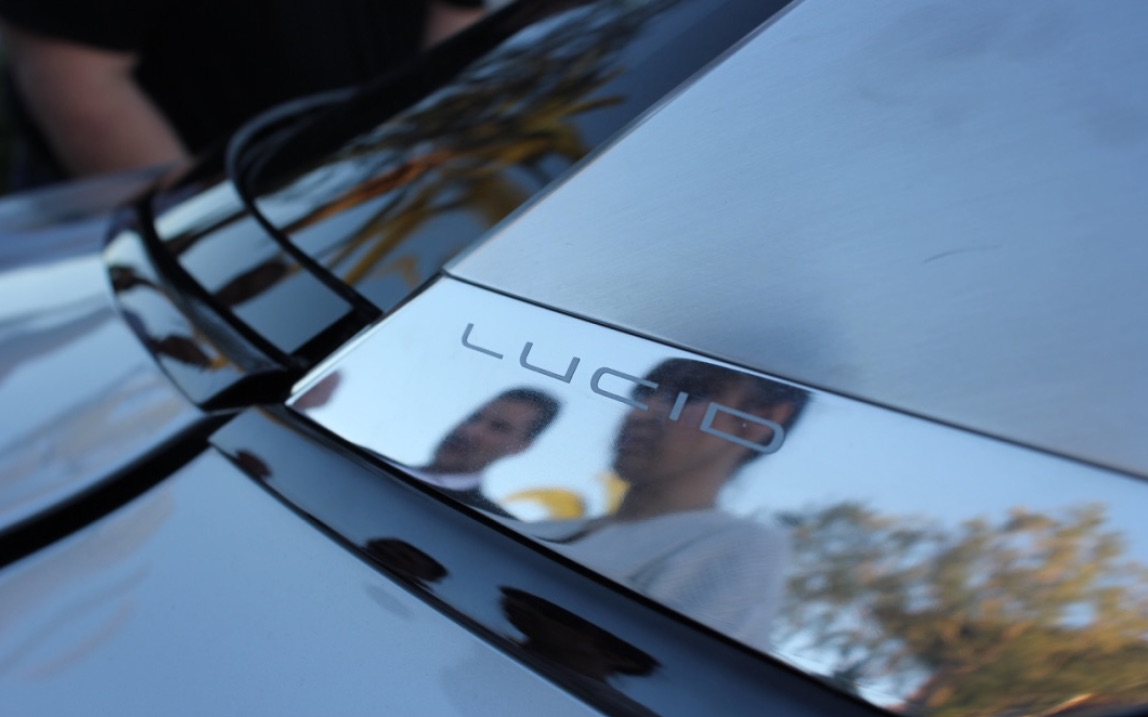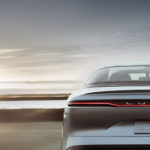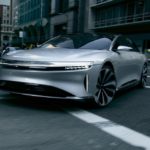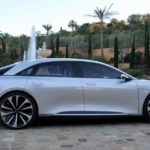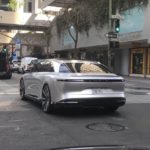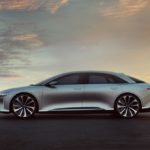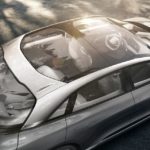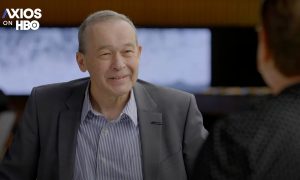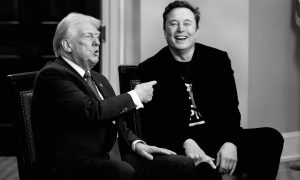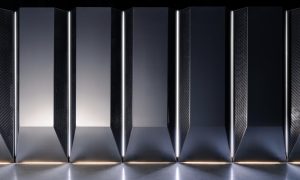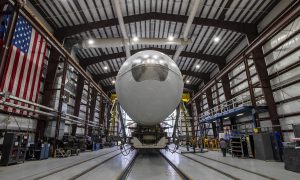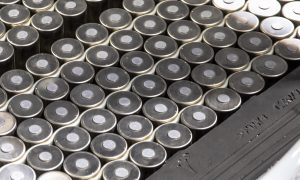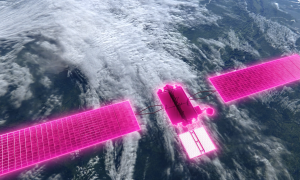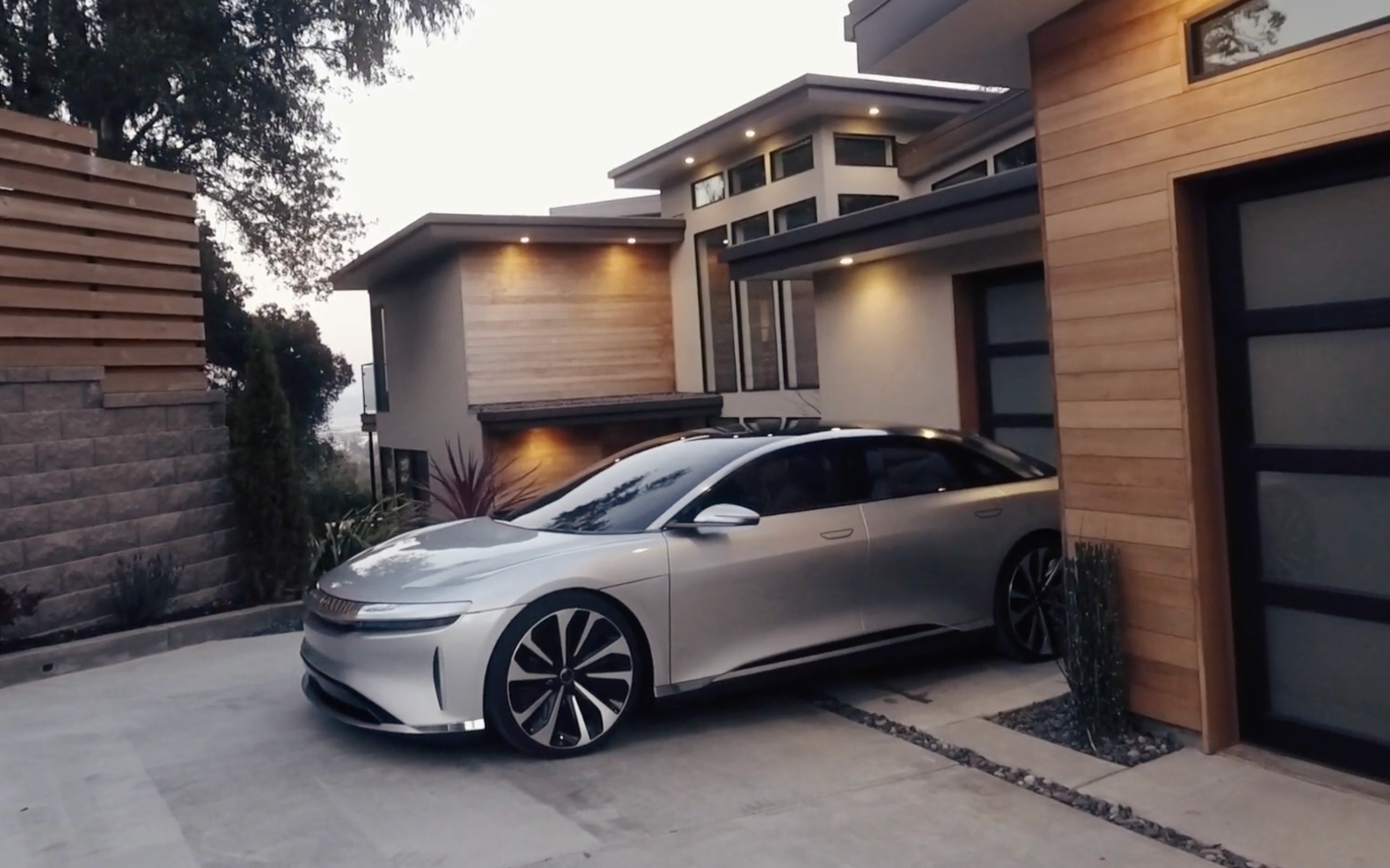

News
Exclusive: A talk with Derek Jenkins, VP of Design at Lucid Motors
The following post comes courtesy of NextMobility.co
I recently had a chance to talk with Lucid Motors VP of Design, Derek Jenkins, about the design philosophy behind the company’s ultra-luxurious Lucid Air. The Silicon Valley-based electric car startup founded in 2007 as Atieva has raised over $130M to date and on the precipice of achieving something no other electric car company within this space, outside of Tesla, has been able to do at scale – float a beautifully executed vision of the not-so-distant future that the greater electric vehicle community actually believes will come to fruition. And, they absolutely can’t wait for it.
Development of Lucid’s electric car platform has been well underway since the beginning of the company, but it wasn’t until 2015 that the first vehicle: the Air, began to take shape. Jenkins, an industry veteran who joined the startup in 2015, is leading the design team at Lucid Motors.
Lucid is aiming directly at the German automakers that historically have dominated the luxury car market. “From the beginning, we were very much focused on a luxury product; we felt like there is still a big opportunity at that end of the market,” says Jenkins. Lucid believes that there will still be a significant amount of time before German luxury auto manufacturers introduce electric vehicles in a meaningful way. “There was a lot of open opportunity to do something that is more forward-facing and less based on tradition, that is kind of the foundation,” said Jenkins.
Lucid says they are taking full advantage of the electric powertrain and the “miniaturization” of the electric motors in their design process, customizing the platform to meet the needs of their design. Lucid’s electric motors, transmission, and differential are all “very compact” compared to the vehicle’s relative power output.
Jenkins tells me that their team rearranged the lithium ion cells in the battery pack to utilize two separate modules, as a way to put more emphasis on opening up interior space. Some areas of Lucid Air’s 130 kWh battery pack is double-stacked, which allowed their designers to maximize interior space by removing certain sections of the vehicle’s floor. The design of the battery pack is a far departure from the single “skateboard” style pack used by Tesla.
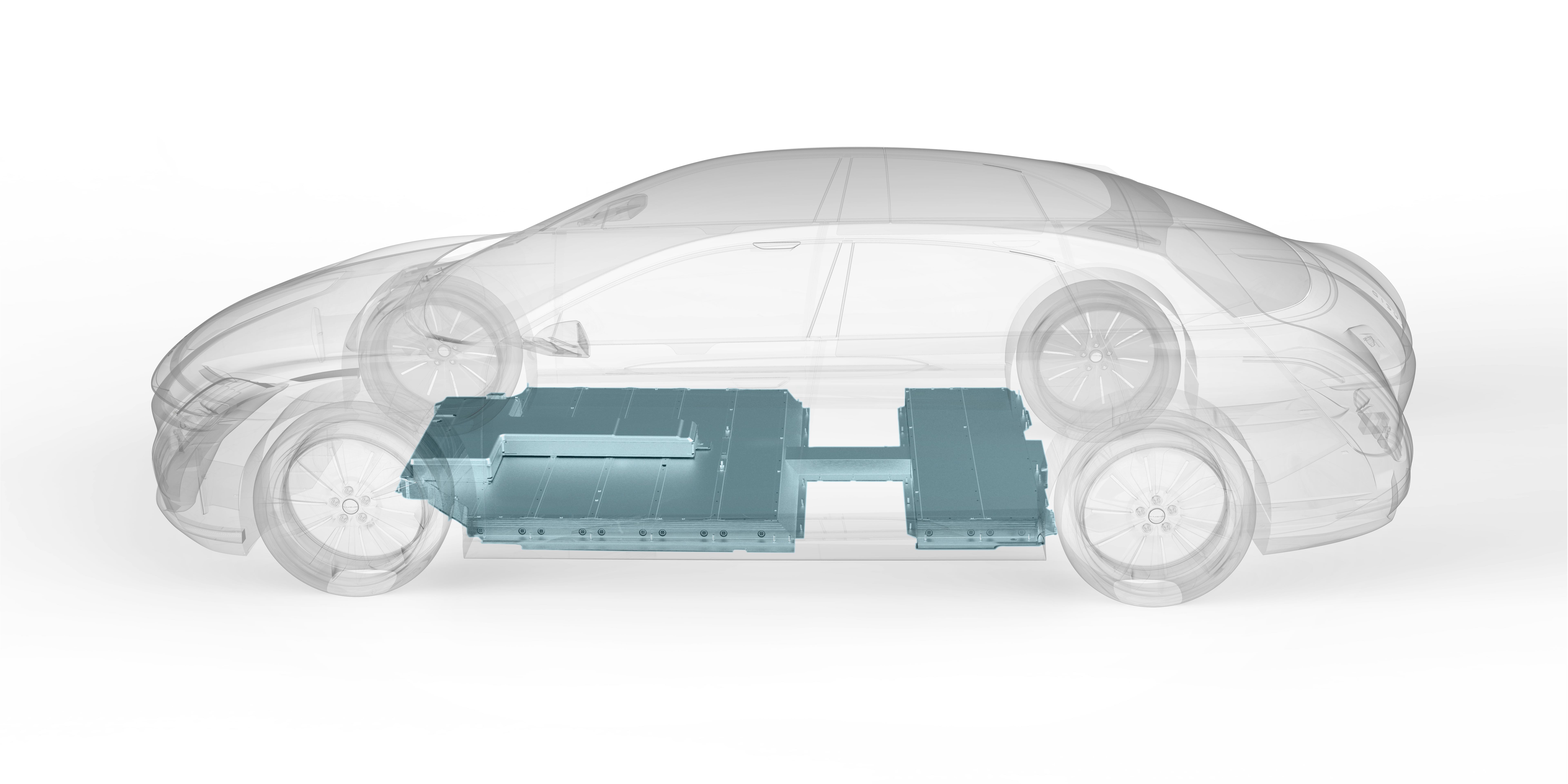
Jenkins tells me that they wanted the interior experience of the car to feel very open, airy, and light. They made the dashboard less bulky, decreased the weight of the doors and focused on letting more air into the car, hence arriving at the name ‘Air’.
Designing for an Autonomous Future
“It’s hard to say whether we will reach full level 5 autonomy in the life cycle of this vehicle.” Jenkins and the Lucid design team made the driver’s area focused on ergonomics. All touch screens are easily within reach and the vehicle is clearly designed with an incredible focus on passenger comfort.
“We’re designing the interior for a dual purpose. I look at that center screen to be used way more in autonomous mode so I can dive into my email or watch TV. You need to create something that someone can be more relaxed in autonomous mode.” – Derek Jenkins, VP of Design at Lucid Motors
Lucid decided not to integrate a fold-away steering wheel, something that other electric car makers are looking to integrate. “We still want the Air to be an amazing driving vehicle, something thoroughly enjoyable to drive and feel physically connected to the car,” says Jenkins.
One design feature that Jenkins highlighted was the Air’s use of brushed aluminum trim that is said to come with a big wow-factor. Designing a vehicle for the future while making it appealing to current customers was a constant balancing act for the Lucid design team.
Still, Lucid reemphasizes Air’s target market will be the typical German luxury sedan buyer. Jenkins says that the Air is designed to have an overall vehicle size of a mid-size luxury sedan (E-Class), but with the luxurious interior of a large luxury sedan (S-Class), and the driving performance and design of a coupe class (CLS-Class). “This is the redefinition of luxury in a real modern sense”.
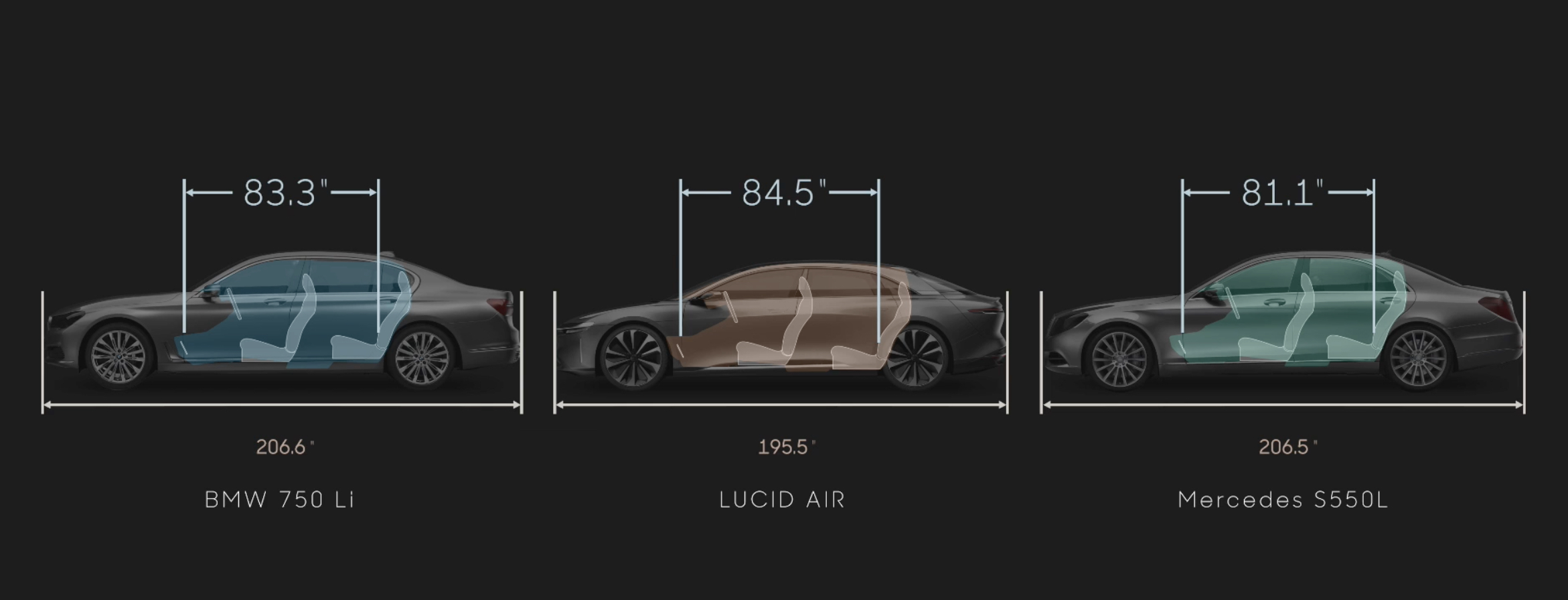
Making the leap to Lucid Motors
Jenkins joined Lucid Motors in July of 2015 and was previously Director of Design at Mazda North America. Jenkins has nearly 25 years of design experience from Audi, VW, and Mazda, and lead the design of many vehicles, including the new 2016 Mazda Miata, VW Scirocco Concept, and Mazda 6. Jenkins, an industry design leader, took a huge risk jumping from a leadership position at Mazda to a Silicon Valley startup, but has no regrets.
“I had been in the industry designing cars for over 20 years… I was sensing a lot of change in the horizon towards electrification; I witnessed the success at Tesla… It was just too attractive to pass up,” said Jenkins.
Lucid expects to attract customers that expect to have an ultra-luxurious interior in the form of a “private jet on wheels“, and new focus on technology and an advanced powertrain. While many are quick to jump to the conclusion that Lucid will have an uphill battle in a market dominated by Tesla, Jenkins says that they didn’t design the Air to be a “Tesla killer”. Rather, the company aims to produce a vehicle that is fundamentally different than Tesla’s offerings.
Jenkins notes that Lucid has been able to keep their headcount low during the development of the vehicle, so they can easily collaborate with other areas within the company and form quick divisions. “It’s a huge advantage, it’s really much more of a form and function exercise, for me as a designer. At the big companies, you are really styling over a given architecture. Here we are actually working together to create a great piece of design and engineering. That’s a big difference.”
First production of Lucid Air is expected in 2019. The company has been raising capital to fund development on a planned $700 million electric vehicle factory in Casa Grande, Arizona.
News
Tesla reveals its Q1 Supercharger voting winners, opens next round
Tesla owners can now vote on where they’d like to see Superchargers land next.
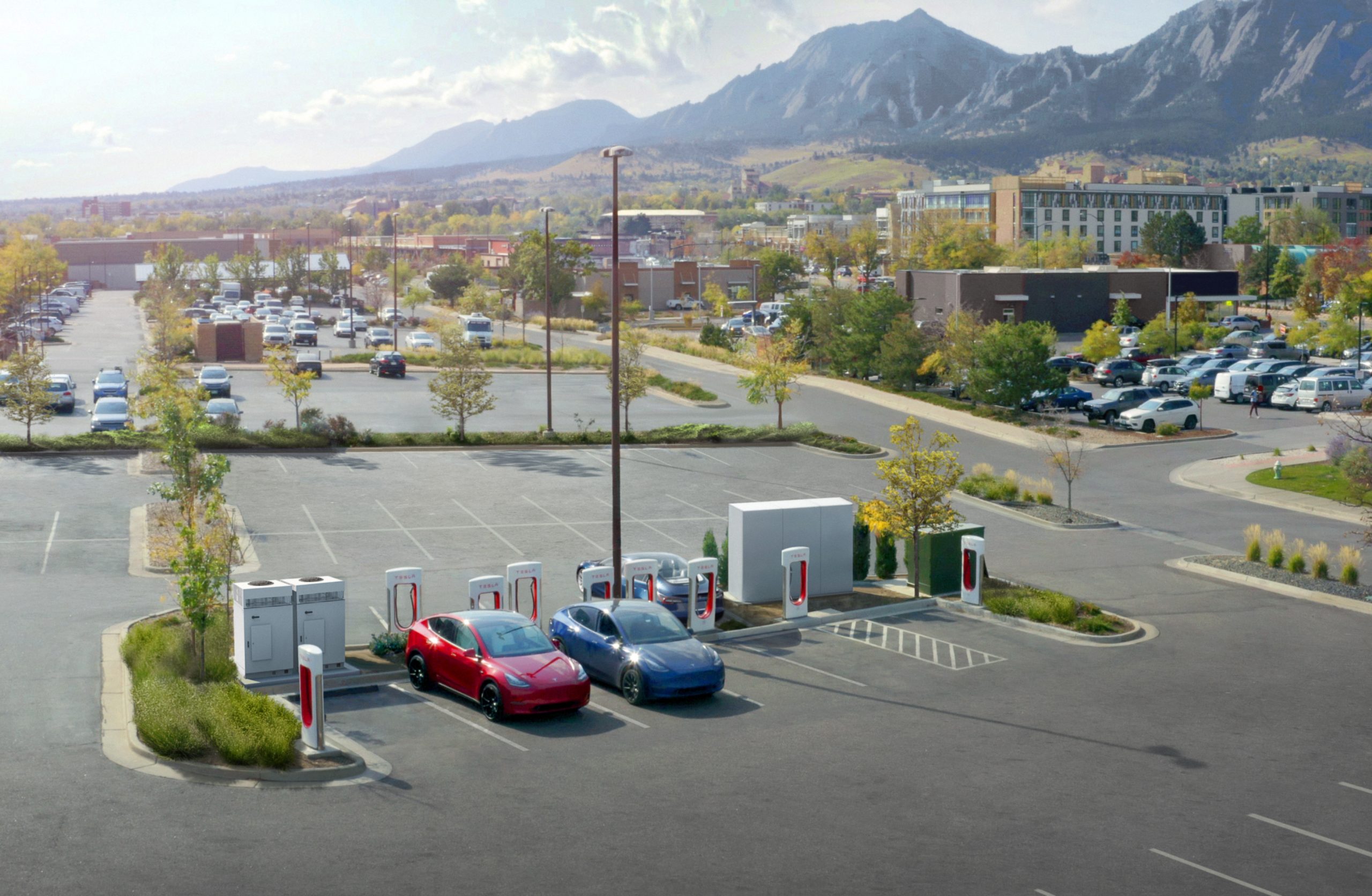
Tesla has revealed the Superchargers that have won the most votes in the first voting round of the year, as the latest part of a series of windows in which owners can vote on the most-suggested locations from previous rounds.
On Monday, Tesla officially opened the next round of voting on proposed Supercharger locations for Q2, and owners can now vote on the sites that were proposed in the last round on the company’s website. The company has also shared the full list of winners from the Q1 round of voting, primarily including sites within the U.S., along with a handful scattered across Europe and the Asia-Pacific region.
Canada wasn’t included in this quarter’s Supercharger winners, despite the previous voting round including five winners from both the U.S. and Canada. At the time of writing, Tesla’s current leaderboard for the newly opened voting round includes the following locations in the top five: Istanbul West, Turkey; Quebec, Canada cities Trois-Rivières, Vaudreuil-Dorion, and Mont-Laurier; and Prosper, Texas in the U.S.

Credit: Tesla
READ MORE ON TESLA SUPERCHARGERS: Tesla Superchargers were over 10 times as reliable as these rivals
You can see the full list of Q1 2025 Supercharger winners below, as posted by Tesla on X, or see them indicated by a gold trophy icon on Tesla’s Find Us page.
Tesla Supercharger Q1 2025 voting round winners in North America
- Fredericksburg, TX
- Clarksville, TN
- Roswell, NM
- Lake Havasu City, AZ
- Long Beach, CA
- McAlester, OK
- Big Creek, GA
- Lake Wales, FL
- Decatur, IL
- Henderson, NV
Tesla Supercharger Q1 2025 voting round winners in Europe and the Middle East
- Wrocław, Poland
- Bari, Italy
- Vilnius, Lithuania
- Hradec Králové, Czech Republic
- Bournemouth, United Kingdom
Tesla Supercharger Q1 2025 voting round winners in the Asia-Pacific region
- Namyangju – Dasan, South Korea
- Nicholls, Australia
- Ipoh, Malaysia
Tesla’s Superchargers and voting rounds
Tesla began offering voting rounds on Superchargers in 2022, and it now runs them quarterly, letting drivers vote on locations that were top-performing proposed locations from previous rounds. The company has also been opening its Supercharger sites to non-Tesla vehicles across the industry over the past several months, and Hyundai, Honda, and Acura were the latest brands to gain access to the network.
Tesla looking to deploy 500kW V4 Superchargers at less than $40k per stall
News
Suspect charged in connection with Tesla New Mexico arson
Another suspect has been charged in connection with the vandalism of a Tesla store—this time in New Mexico.
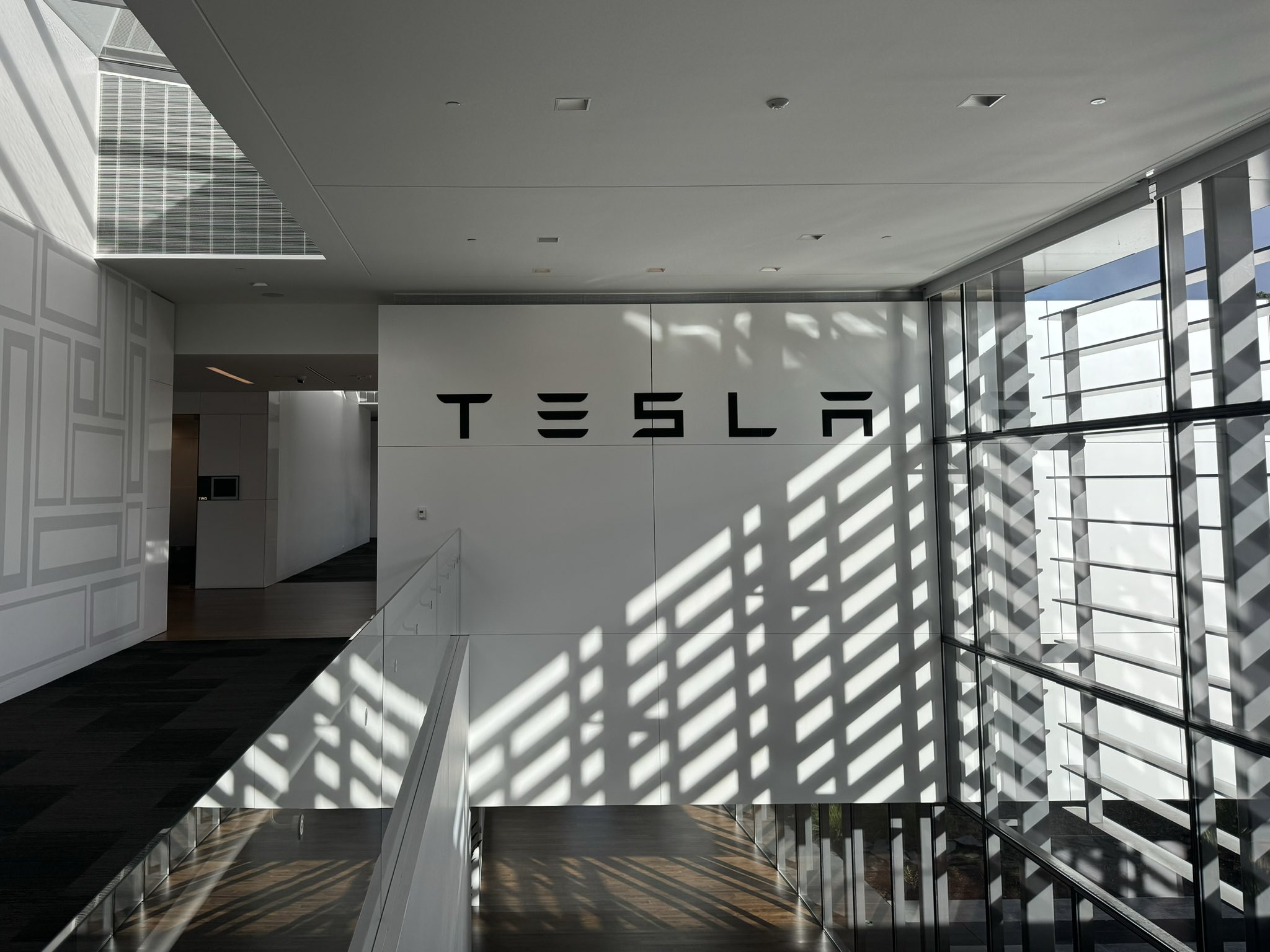
Authorities have arrested and charged a suspect in connection with a firebombing attack on a Tesla store in New Mexico, amidst a larger wave of vandalism attempts targeting the company’s vehicles and retail locations.
On Monday, U.S. Attorney General Pam Bondi and FBI Director Kash Patel announced that a suspect had been arrested in relation to a pair of firebombing attempts on Tesla’s Albuquerque store, saying that authorities would attempt to seek up to 40 years in prison for the suspect.
Later in the day, the Albuquerque resident, 40-year-old Jamison Wagner, had officially been charged related to separate fires at the Tesla store on February 9 and at a nearby Republican Party office on March 30, according to a report Bloomberg. The suspect is charged with two counts of malicious destruction of property by fire or explosives.
“We have made an arrest in connection to the February firebombing of a New Mexico Tesla dealership and the March attack on the New Mexico Republican Party Headquarters,” Bondi wrote in a post on X. “We will be prosecuting to the fullest extent of the law. We are seeking up to 40 years in prison—no negotiating.”
🚨 Elon Musk announces the measures Tesla is taking to fight the vandalism that has been going on at stores across the country https://t.co/rAZzbzLayQ
— TESLARATI (@Teslarati) March 20, 2025
READ MORE ON TESLA VANDALISM: Tesla attacks get FBI task force to squash the acts of ‘domestic terrorism’
Patel went on to say in his own post that evidence recovered at the crime scene suggested that the arrest, made on Saturday, prevented further arson attempts.
The February attack involved two Tesla vehicles that had been set on fire, along with graffiti saying “Tesla Nazi Inc,” “Die Elon,” and drawings of swastikas, court documents show.
After gaining a search warrant for Wagner’s home, Federal investigators discovered evidence that linked him to both the Tesla store attack and the Republican headquarters attack, including incendiary devices and spray paint identified as the graffiti at the crime scenes.
The news follows a series of vandalism targeting Tesla stores in the U.S. and around the world, in response to Elon Musk’s controversial involvement with the administration of President Donald Trump.
Over the past few months, Bondi, Patel, Musk, and the Trump administration have repeatedly vowed to prosecute offenders to the fullest extent of the law in the past several weeks, along with noting that the attacks would be considered “domestic terrorism.”
In late March, authorities charged another vandal in connection with a Las Vegas repair center fire, concluding that the alleged attacker had used Molotov cocktails to set the building and five vehicles on fire. The same week, another 17 cars at a Tesla store in Rome, Italy were set on fire, while the country’s anti-terror police unit, the General Investigations and Special Operations Division, known as DIGOS, continues to investigate how the fire began.
Last Tuesday, Tesla announced that the company was working with the FBI to investigate an explosion at a Supercharger in Lacey, Washington. While a suspect hasn’t been arrested, authorities and users online have since been circulating photos from surrounding security footage to attempt to identify a man who is now wanted by police in connection with the attack.
This Tesla vandal caused thousands in damage, but she was let off the hook: Here’s why
News
Waymo kicks off initial tests in Japan with launch event
Waymo launches early tests in Japan, as Tesla and others look to roll out their own commercial robotaxi services.
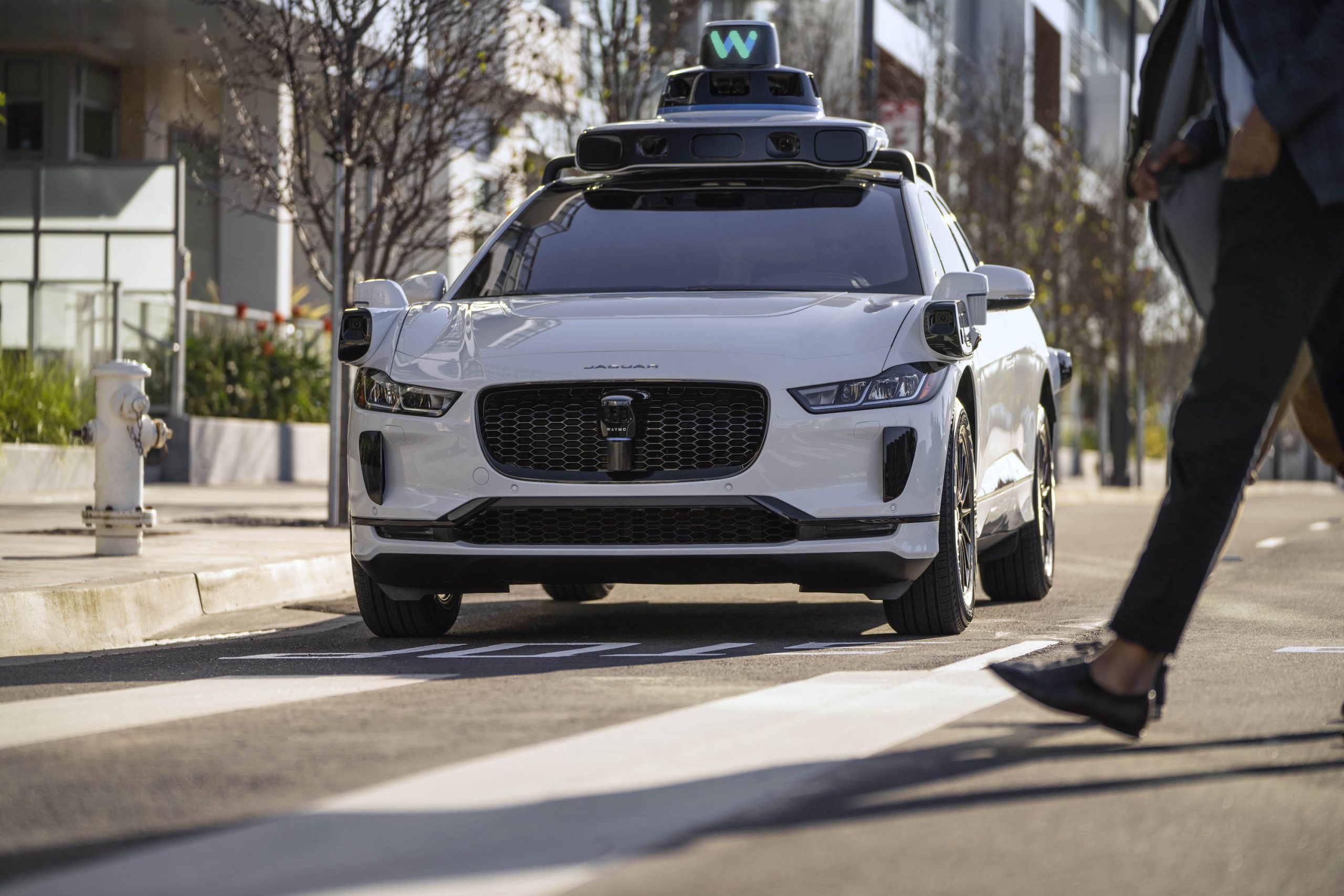
Commercial robotaxi company Waymo held a launch event in Japan last week, as the company prepares to enter early manual testing on its first international roads.
After Waymo shared plans to start testing vehicles in Japan in December, the Google-owned firm detailed the launch event in a press release on Monday. The event featured officials from project partners GO, a taxi platform, and Nihon Kotsu, the largest taxi company in Tokyo, along with featuring one of the company’s camera-, lidar-, and radar-outfitted Jaguar I-Pace units, expected to begin manual testing around Tokyo in the weeks to come.
Ichiro Kawanabe, Board Director at Nihon Kotsu and Chairman at both GO and the Japan Taxi Association, said that Waymo’s U.S. operations “demonstrated significant safety benefits,” along with thanking the company for hosting the event at the newly developed Takanawa Gateway City complex.
“I took my first ride with Waymo in Phoenix a year and a half ago and was amazed that there was really no one in the driver’s seat,” the chairman said. “That was the moment I was convinced that autonomous driving technology could absolutely benefit Japan. It will help ensure mobility service in the future of Japan, with the growing aging population and labor shortage.”
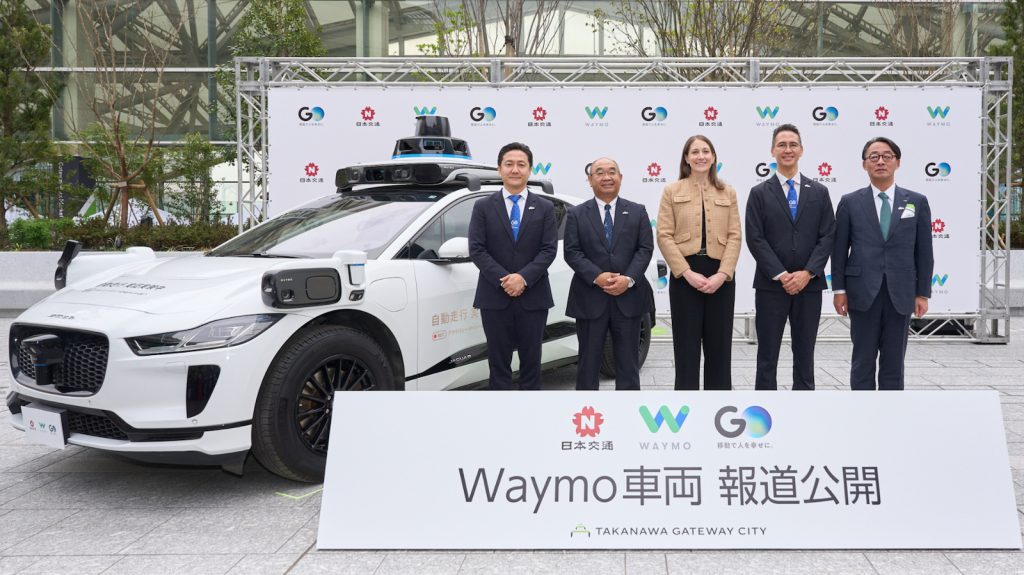
Credit: Waymo
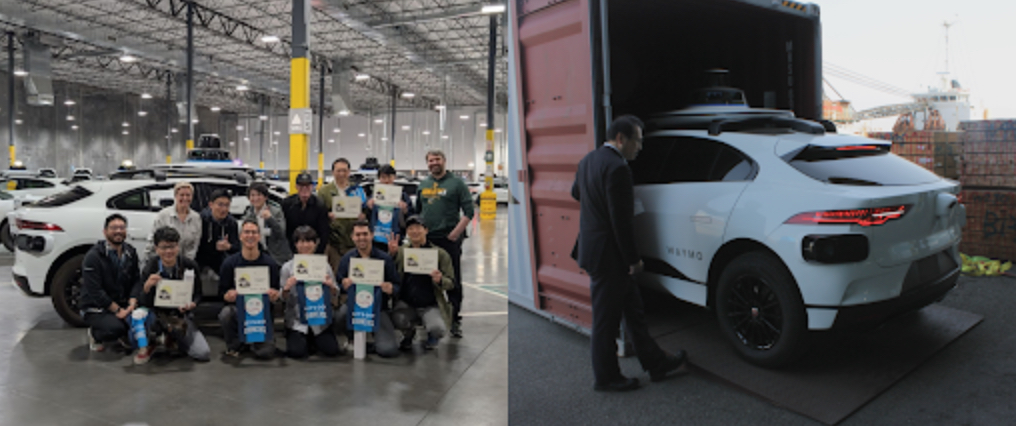
Credit: Waymo
This spring, Nihon Kotsu taxi operators will start driving Waymo vehicles across several Tokyo wards this spring, including Chiyoda, Chūō, Kōtō, Minato, Shibuya, Shinagawa, and Shinjuku. The tests will utilize 3D maps of the city, along with utilizing experienced drivers to generate data about traffic laws, patterns, and other road systems ahead of fully autonomous operation.
“After months of strong collaboration with Nihon Kotsu and GO, Waymo has reached a historic milestone— our first venture on international public roads,” said Nicole Gavel, Waymo Senior Director and Head of Business Development and Strategic Partnerships.
“Our partnership demonstrates how Waymo’s 15 years of operational expertise can adapt to new environments through strategic initiatives with industry leaders,” Gavel adds. “In Tokyo, we are abiding by the same steadfast principles that guide us in the U.S. — commitment to safety, dedication to earning trust in communities where we operate, and collaboration with local officials and community groups here in Tokyo.”
The news comes as Tesla, Amazon-owned firm Zoox, and still others are racing to enter the commercial robotaxi business throughout this year. It also comes amidst widespread speculation and debate about the emerging market, and as Tesla and Waymo both aim to begin operations internationally.
READ MORE ON WAYMO: Waymo study analyzes collisions with vulnerable road users
Tesla’s FSD in China, Mexico, commercial robotaxis still incoming
Waymo is already operating paid autonomous ride-hailing services around the U.S., and it said in December that it was giving more than 200,000 autonomous rides per week.
The company currently offers Waymo services in San Francisco and Los Angeles, California, Phoenix, Arizona, and, through a partnership with Uber, in Austin, Texas, where Tesla has a Gigafactory and plans to launch initial robotaxi services. The Alphabet-owned company is also aiming to launch services in Atlanta, Georgia and Miami, Florida this year, alongside its early tests in Tokyo.
Although Tesla doesn’t currently operate driverless ride-hailing in any capacity, individual owners in North America can purchase or subscribe to its Supervised Full Self-Driving (FSD) system, on which the company’s forthcoming robotaxi platform will be based. In October, the company unveiled the two-seat Cybercab vehicle, which has no steering wheel or pedals and will be used for the upcoming commercial robotaxi system.
Additionally, the company is aiming to launch its first unsupervised rides commercially in Austin in June, and it recently debuted Supervised FSD in China and Mexico, marking the company’s first international markets.
🎥: Our FULL first ride in the @Tesla Cybercab pic.twitter.com/6gR7OgKRCz
— TESLARATI (@Teslarati) October 11, 2024
Waymo vs. Tesla vs. the competition
While Tesla hasn’t quite gotten a commercial robotaxi service to market yet, Waymo, Amazon-owned company Zoox, and still many others have begun their own paid ride-hailing services or early tests. Meanwhile, Tesla’s approach to the technology is vastly different than that of Waymo and others, utilizing a camera-only, AI-trained neural network system, rather than 3D geomapping.
For one, the company can generate a larger pool of training data from real-time driving behavior of its individual owners, for instance as compared to Waymo’s use of a more-limited fleet of taxi drivers. Many argue that this, along with the cost-effectiveness of producing a system that’s built into every vehicle and utilizes only cameras, make the system more scalable than those of Waymo and others.
Still, some support the use of more than just camera systems and building in sensor redundancy as a way to maximize safety, especially as the technologies are still fairly new. Former Waymo CEO John Krafcik, who was a part of the company until 2021, criticized the FSD system in December for not including enough safety measures to support a realistic commercial robotaxi business, and he went on to call Tesla “a car company with a driver-assist system.”
“If a company were serious about building a safe and accessible robotaxi business, it would look nothing like what was shown,” Krafcik said during an interview. “The cost of a robust sensor set, including lidar, is trivial on a per-mile basis. Even more so for mapping. And the safety benefits measured in human harm reduction are real and verifiable.”
Waymo valued at over $45 billion following latest financing round: report
-
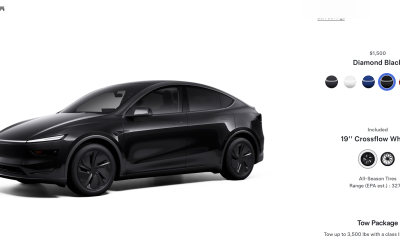
 News2 weeks ago
News2 weeks agoTesla rolls out new, more affordable trim of the Model Y Juniper in U.S.
-

 News2 weeks ago
News2 weeks agoTesla shares Optimus’ improved walk in new update video
-

 Elon Musk2 weeks ago
Elon Musk2 weeks agoTesla Germany reports 4,935 units sold in Q1 2025
-
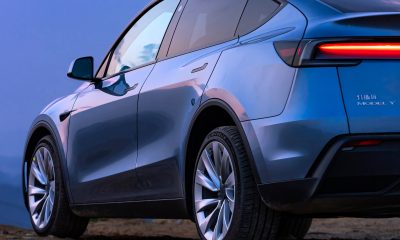
 Investor's Corner2 weeks ago
Investor's Corner2 weeks agoTesla (TSLA) shares company-compiled Q1 2025 delivery consensus
-
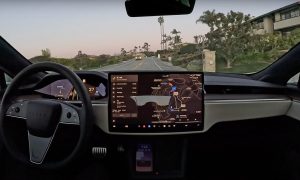
 News2 weeks ago
News2 weeks agoTesla expands Early Access Program (EAP) for early Full Self-Driving testing
-

 Elon Musk2 weeks ago
Elon Musk2 weeks agoNYC Comptroller moves to sue Tesla for securities violations
-
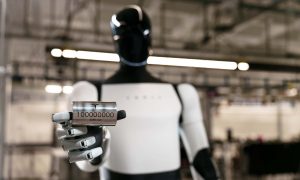
 News1 week ago
News1 week agoTesla celebrates key milestone for 4680 battery cell production cost
-

 News2 weeks ago
News2 weeks agoTesla’s Elon Musk reiterates ambitious Cybertruck water update

